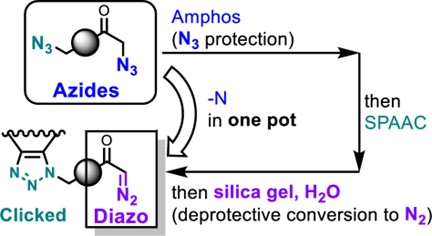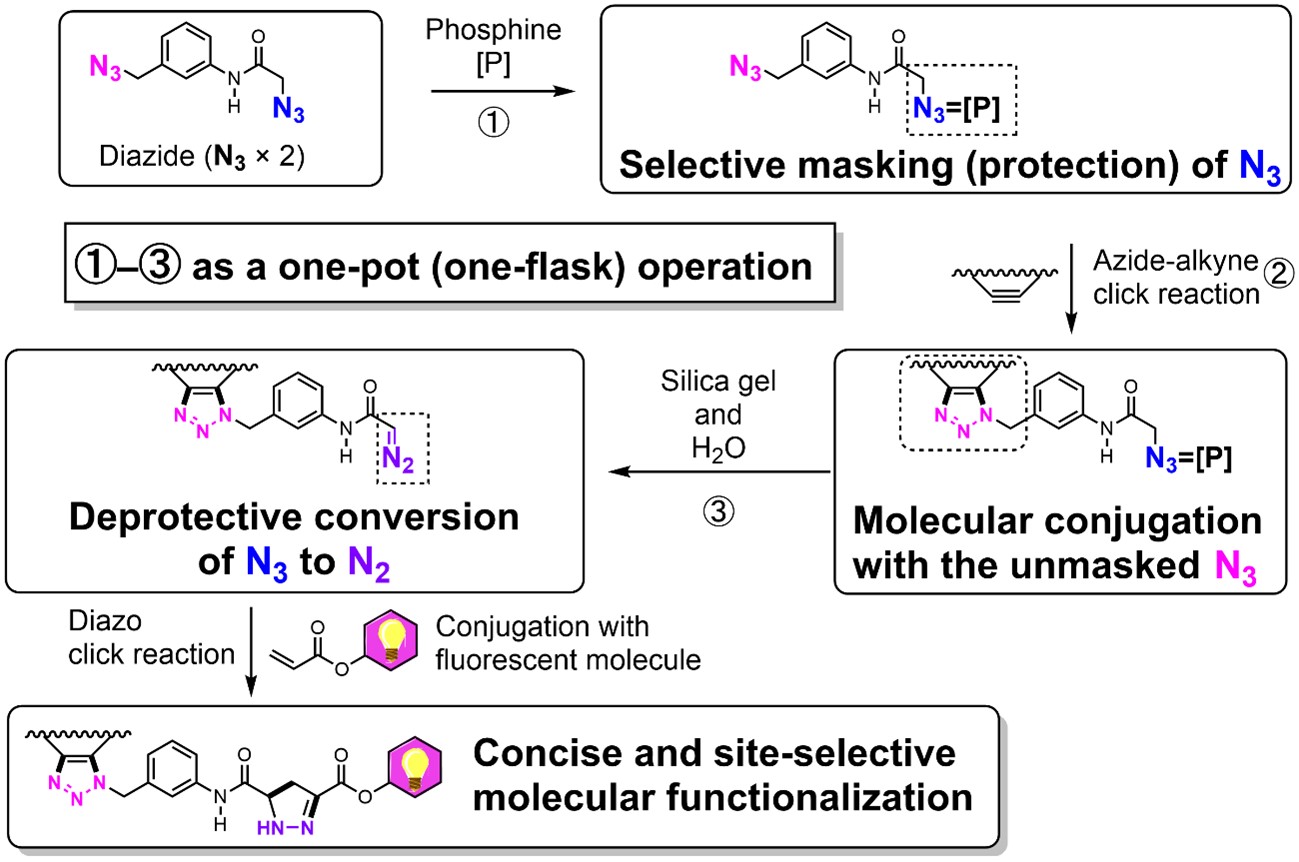Masking of azido click groups can convert them to diazo click groups.
Summary
Dr. Tanimoto and co-workers developed a direct conversion method from azido to diazo click groups through the azide group protection step. This method demonstrated the azide-site selective conversion of diazido compounds, which is expected to develop the application to multifunctional materials in the field of life science and polymer chemistry.

Background of the Research
Click chemistry, a Nobel Prize in 2022, which involves the precise conjugation of two molecules, has attracted considerable attention in various scientific fields such as polymer chemistry, chemical biology, and life sciences. However, for the development of more efficient functionalized materials, multicomponent conjugation on a molecule with multiple azido groups is a problem due to the same reactivity leading to promiscuous and random conjugation.
Research Content and Achievements
The research group discovered that deprotection of the phosphine-protected alkyl azides (N3) yields diazo compounds (N2). This method demonstrated azide site selectivity, and the multiple synthetic sequences of (1) site-selective azide protection; (2) click conjugation with the unprotected azide; (3) conversion of the protected azido group to the diazo group, were accomplished as a one-pot operation. Concise and site-selective molecular conjugation was achieved by the subsequent diazo click reaction with the fluorescent molecules towards the functional chemical probes for chemical biology.

Original Article Information
Journal
Organic Letters
Title
Amphos-Mediated Conversion of Alkyl Azides to Diazo Compounds and One-Pot Azide-Site Selective Transient Protection, Click Conjugation, and Deprotective Transformation
Authors
Hiroki Tanimoto, Ryo Adachi, Kodai Tanisawa, and Takenori Tomohiro

